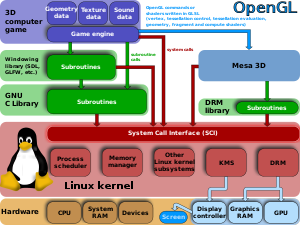Real time
A real-time (STR) system is a digital system that actively interacts with an environment with known dynamics in relation to its inputs, outputs, and time constraints, to give it correct operation in accordance with the concepts of predictability, stability, controllability and achievability.
Real-time systems are present in our daily lives, practically everywhere around us: on planes, trains and cars, on the television, washing machine or microwave oven, on cell phones and in the digital telephone exchanges. They are an essential element to guarantee the generation, transmission and distribution of electrical energy and to ensure the quality and safety of countless industrial processes.
Features
The main characteristic that distinguishes STRs from other types of systems is the interaction time. However, before continuing it is necessary to clarify the meaning of the words time and real.
- The word time means that the proper functioning of a system depends not only on the logical result that the computer returns, also depends on the time that that result occurs.
- The word Real means that the reaction of a system to external events should occur during its evolution. As a consequence, the time of the system (internal time) must be measured using the same scale with which the time of the controlled environment (external time) is measured.
Strs can be found in very important places due to the services they provide: they monitor, control and protect, for example, the transmission and distribution systems that deliver electrical energy to industries and also to our homes. STRs are present in the train traffic monitoring areas; its importance is relevant because millions of passengers are transported daily.
An STR has three basic conditions:
- Interacts with the real world (physical process)
- Issue correct answers
- Comply with temporary restrictions
In contrast to the definition of STR, a fast system produces its output without considering the time constraints of the environment with which it interacts, for this class of systems the time in which the data reaches the digital system is not important but only the time in which the output is produced, in other words, the only interest is the speed of giving the response within the time interval whose measure, the smaller the better, regardless of the cost of generating that response. In the same way, the concept of STR tends to be confused with that of the online system:
An online system is one that must always be on, available and generally connected to a computer network and depends on the ability of the hardware to handle service requests and is never in sync with the real world or has restrictions temporary. In addition to this, an offline system is one that is not always available to receive and send information and that depends on a previously established database to execute its mission. Examples of online systems include Internet applications such as web browsers or data acquisition through a specialized card in a time-sharing environment such as Windows.
Examples
The STR concept is not restricted to digital or computer systems, since it can be extended to the living world: humans, animals and plants. As an example, consider a fertile seed, which somehow reaches the earth (either by action of the wind, through the waste of some animal at the end of its digestion, etc.). It can be ensured that the seed germination process is a real-time system in the environment and in the circumstances in which it develops, since environmental stimuli (constant appropriate humidity, constant adequate temperature, necessary light, etc.) the system (the seed) responds within its specific time constraints. If the seed were only a fast system (and not Real Time), as soon as it touched the ground it would begin its germination process, regardless of the scarcity of nutrients in the soil or water or the season of the year, so the behavior of the seed would not correspond to what is happening in the environment, that is, the time interval in which the response of the system (seed) occurs would not be very important, but in reality it would cause it to die quickly due to the lack of its adaptability, when trying to consume nutrients more than it can assimilate or that are available to be absorbed by the plant root.
Contenido relacionado
MediaWiki:Ipblocklist
<h2>By range of instruments</h2>
980
